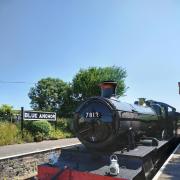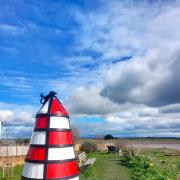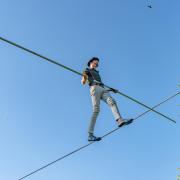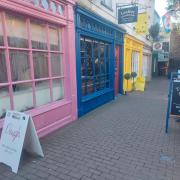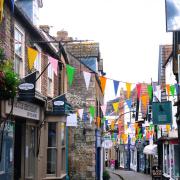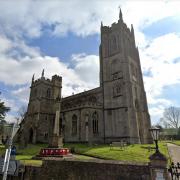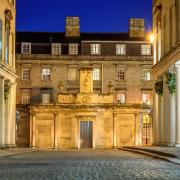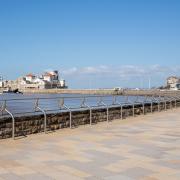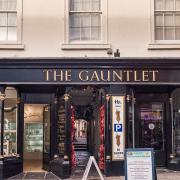Bridgwater’s historic waterways are a treasure worth celebrating, discovers CATHERINE COURTENAY

For a growing band of people it's one of Somerset's 'hidden gems', and Mike Slade is one of Bridgwater's most vocal supporters.
Mike lives in Bridgwater and still remembers the moment he first fell in love with the canal that runs from the docks, looping through and around the town, before heading off on its 14-mile run to Taunton.
"I was 20 years old. I had a caravan and used to come up from North Devon. We'd keep the caravan at Bathpool, which was adjacent to the canal. You could go straight from the site to the canal and hire out tug boats."
That was many years ago, says Mike, and admittedly his first impressions were gained closer to the Taunton end of the canal, but he's never forgotten the impact it made on him and the enjoyment he felt when exploring this stretch of waterway.

Mike works with the Inland Waterways Association (IWA), a charity which maintains and restores canals. About five years ago he set up a group of like-minded volunteers who spend many hours tending to the Bridgwater to Taunton Canal, clearing litter and restoring and maintaining the waterway.
It's a valuable green corridor between two towns he says, another reason why he's part of a growing movement to make the canal a major feature in Bridgwater for both locals and visitors.
"Bridgwater Docks was the fifth biggest in the country about 180 years ago," says Mike, adding how important it was for the town's famous brick and tile industry.
The canal has been a key element in the history of the port. It initially went from Taunton to Huntworth and was extended to Bridgwater's new docks by 1841. It was used to carry goods, mainly coal and iron from South Wales, along with timber and limestone. It connected to the Chard and Grand Western canals, and so could reach Ilminster, Chard, Wellington and Tiverton.
But the canal faced competition from the railways; it was bought by Great Western Railway in 1867 and gradually fell out of use. It survived as a water supply and drainage channel, although its swing bridges were fixed shut as a safety precaution during the World War Two.
These days it's seeing a new lease of life as a leisure and recreation route, used by many, from walkers and fishermen to canoeists and kayakers.
Many in the town are pushing for the canal, docks and River Parrett to become a joined-up waterways feature, and the pressure is on as they want it to coincide with the Bridgwater Tidal Barrier, which is due to be built downstream by 2024.
"We're focusing on ways to get the lock that leads into the River Parrett re-opened," says Mike explaining that access to the Parrett would open up an additional 15-mile leisure waterway all the way to Langport - another historically significant port.
The IWA volunteer group meets twice a week in Bridgwater, some people coming from 30 miles to help look after the canal.
In the past couple of years another campaigning group has stepped in to help.
Rage Against Rubbish was formed by a group of kayakers, Dan Perry and his nine-year-old son Riley, Trev Vass, Jason Winter and Sarah Johnstone. All were fed up with seeing so much litter on and in the canal, so they decided to clear it up themselves. Word spread and more joined in and they now hold monthly litter clear-ups. Rubbish is collected from the towpath and from the water, with volunteers taking to canoes and kayaks to help.
Sarah says: "We have our regulars but at every litter pick there are new people attending, a lot of locals who want to do something. All sorts come along, retired couples to families and teenagers."
Sarah comes from Bridgwater and has known the canal since childhood, when she'd go for walks along the towpath with her parents. Before Rage Against Rubbish she'd never been in a kayak, but she now owns her own, and adores paddling along this special waterway.
Litter picks begin at the canal-side by the YMCA in Bridgwater, which helps by providing canoes. The Purplespoon Café which has a terrace opening onto the canal, gives every volunteer 10 per cent off hot food and drinks.
"And without the IWA we'd struggle to do our job, they lend us a flat-bed boat on which we can load the rubbish," adds Sarah.
Both the IWA and the Rage Against Rubbish groups have also adopted sections of the canal in partnership with the Canal and River Trust. This means they pay particular attention to one stretch of the canal. For Rage against Rubbish it's the area from Albert Street Bridge to the Taunton Road Bridge. As well as litter picking volunteers keep the paths clear and plan to host community events to encourage people living nearby to make the most of the canal.
"Some people who come to litter pick live in Bridgwater but never knew the canal was there - or how pretty it is," says Sarah.
Sarah is on a mission to stop littering, but she also appreciates the simple beauty of exploring the canal, either on foot or on the water.
"On a sunny day I love going out of Bridgwater from the docks; the stretch before North Newton is so pretty and when the sun goes down it's stunning. And I love to see the sunrise over the docks when I go for my morning run."
Did you know:
The canal's Albert Street Cutting was used for filming the BBC historical drama Wolf Hall, due to its resemblance to Traitors' Gate at the Tower of London.
A Bridgwater Docks Gala, organised by Pat Robinson, takes place each summer. It aims to raise the profile of the canal with stalls, entertainment, music and boat trips.
The Somerset Boat Centre, just along the canal at North Newton, offers a range of ways to explore the canal, from canoe and kayak hire, to boat trips. There's a range of themed mini cruises - including history, nature, music or dining options.




